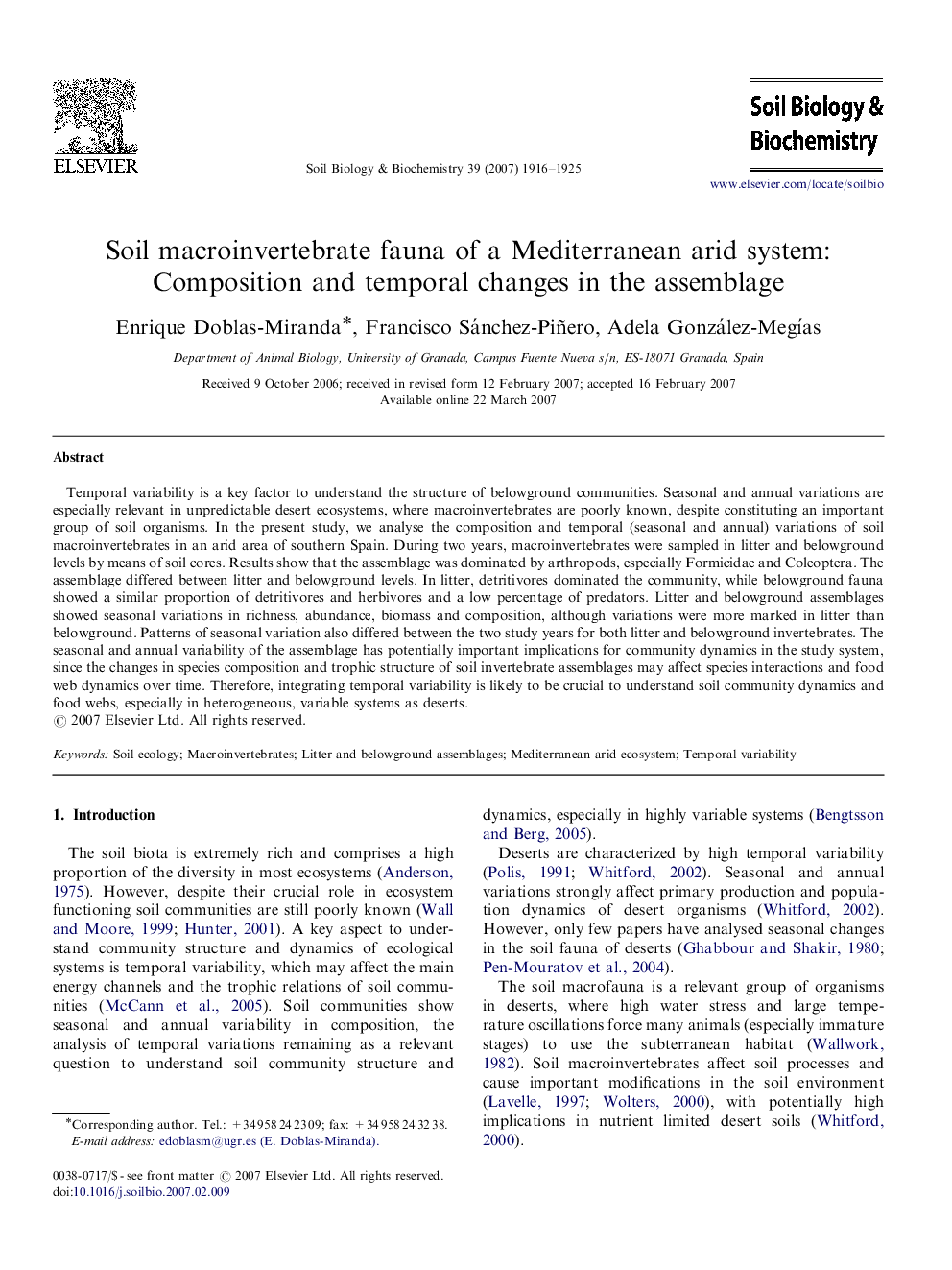| Article ID | Journal | Published Year | Pages | File Type |
|---|---|---|---|---|
| 2026057 | Soil Biology and Biochemistry | 2007 | 10 Pages |
Temporal variability is a key factor to understand the structure of belowground communities. Seasonal and annual variations are especially relevant in unpredictable desert ecosystems, where macroinvertebrates are poorly known, despite constituting an important group of soil organisms. In the present study, we analyse the composition and temporal (seasonal and annual) variations of soil macroinvertebrates in an arid area of southern Spain. During two years, macroinvertebrates were sampled in litter and belowground levels by means of soil cores. Results show that the assemblage was dominated by arthropods, especially Formicidae and Coleoptera. The assemblage differed between litter and belowground levels. In litter, detritivores dominated the community, while belowground fauna showed a similar proportion of detritivores and herbivores and a low percentage of predators. Litter and belowground assemblages showed seasonal variations in richness, abundance, biomass and composition, although variations were more marked in litter than belowground. Patterns of seasonal variation also differed between the two study years for both litter and belowground invertebrates. The seasonal and annual variability of the assemblage has potentially important implications for community dynamics in the study system, since the changes in species composition and trophic structure of soil invertebrate assemblages may affect species interactions and food web dynamics over time. Therefore, integrating temporal variability is likely to be crucial to understand soil community dynamics and food webs, especially in heterogeneous, variable systems as deserts.
